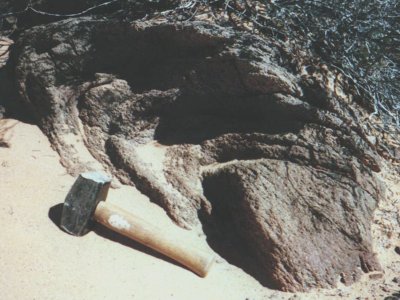
This rock comes from the Gariep Belt of western South Africa, one of a number of belts formed during the Pan-African orogeny in the period 700-500 Ma ago. It crops out in a small package of metasediments, known locally as the Zoutpan Schist, which lie unconformably on older basement. These metasediments are interpreted as the basal parts of a passive continental margin sequence overridden by a stack of thrust nappes during the closure of a proto-South-Atlantic ocean. In outcrop, recumbent folds of similar-type geometry and wavelength of a few metres deform a compositional banding defined by layers of greater or lesser Al content (original bedding). A fine-grained early metamorphic fabric probably formed parallel to this banding. The mesoscopic folds developed an axial-planar foliation, defined now in the metapelites by muscovite laths. The samples come from the hinge zone of a fold, where compositional banding is at a high angle to the axial-planar foliation.

Outcrop photograph of tightly folded Zoutpan Schist. The fold has an axial-planar schistosity parallel to the hammer shaft.
This rock illustrates the sequence of growth of porphyroblasts in a conventional Barrovian sequence, reaction mechanisms for Al-silicate growth, and deformation accompanied by matrix coarsening at a particular point in the metamorphic development. Some photomicrographs of characteristic microstructures are shown below. The mineral assemblage is Qtz + Pl + Bt + Ms + St + Grt + Ky + Sil, with accessory Tur, opaque oxide, Mnz and Zrn.
What follows is my own interpretation of the sequence of mineral growth and fabric development, (slightly modified from the account in Joubert and Waters 1980, Ann. Rpt. Precamb. Res. Unit, Univ. Cape Town). Most of the early microstructural history and planar fabrics have been obliterated by coarse poikiloblast growth. The photomicrographs show some of the features. The sequence is:
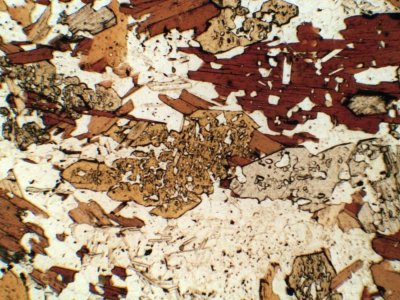
Porphyroblasts of staurolite (centre) and kyanite (right). The fine inclusions in the core of the staurolite define a fabric running N-S in the photograph, at right angles to the E-W foliation in the matrix defined by muscovite flakes.
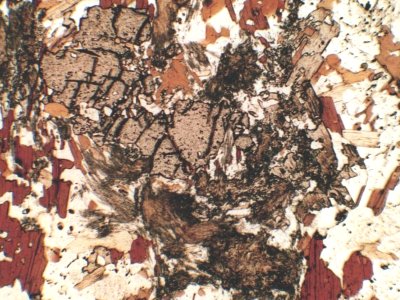
An embayed garnet porphyroblast is partly replaced by dark-looking clusters of fibrolitic sillimanite and flakes of biotite.
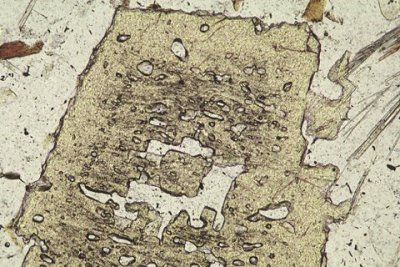
Detail of fine internal fabric within staurolite.
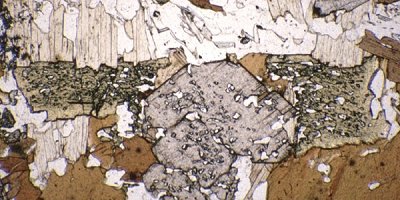
Kyanite and biotite cut across the pattern of fine inclusions and inclusion-free rim shown by a staurolite crystal, establishing the sequence of growth.